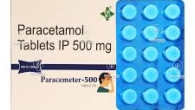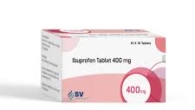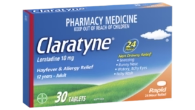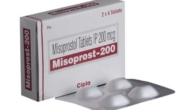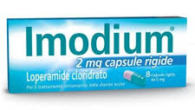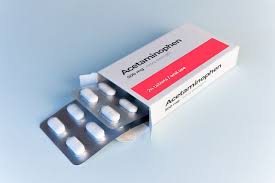
Important Paracetamol (Acetaminophen): Your 2 Go-To for Pain and Fever Relief
Paracetamol (Acetaminophen): Your Go-To for Pain and Fever Relief
important Paracetamol (Acetaminophen): Your Go-To for Pain and Fever Relief: Paracetamol, also known as acetaminophen, is one of the most commonly used over-the-counter medications in the world. Known for its pain-relieving and fever-reducing properties, Paracetamol is an essential medicine in every home kit. Whether you’re dealing with a headache, muscle soreness, or a fever, Paracetamol offers a quick and effective solution. Let’s explore what Paracetamol is, how it works, its uses, side effects, and why it’s so significant in healthcare.
What Is Paracetamol (Acetaminophen)?
Paracetamol is a medication that falls under the class of analgesics (pain relievers) and antipyretics (fever reducers). Unlike NSAIDs (nonsteroidal anti-inflammatory drugs), such as ibuprofen, Paracetamol doesn’t have significant anti-inflammatory effects, but it is still highly effective for treating mild to moderate pain and reducing fever.
Its primary function is to block pain signals in the brain and lower body temperature by acting on the hypothalamus, the part of the brain that controls temperature regulation.
How Paracetamol Works {Paracetamol (Acetaminophen)}
Paracetamol works by inhibiting the production of prostaglandins, which are chemicals in the body responsible for causing pain and inflammation. However, it mainly works centrally in the brain rather than peripherally (on the site of the pain), unlike NSAIDs. By blocking pain signals and reducing fever, Paracetamol provides relief from common ailments.
Common Uses of Paracetamol {Paracetamol (Acetaminophen)}
1. Pain Relief:
- Headaches: Paracetamol is an effective remedy for mild to moderate headaches.
- Menstrual cramps: Provides relief from painful menstrual periods.
- Muscle aches and joint pain: Works well for relieving tension, stiffness, or general body pain.
- Toothaches: Useful for managing discomfort related to dental issues.
- Arthritis pain: Effective in managing mild pain associated with arthritis.
- Post-operative pain: Paracetamol is frequently used as a component of pain management post-surgery.
2. Fever Reduction:
- Common cold and flu: Often recommended to lower fever associated with infections.
- Fever in children and adults: Paracetamol is widely prescribed to manage high body temperature.
Dosage of Paracetamol {Paracetamol (Acetaminophen)}
It’s crucial to follow the recommended dosage to prevent potential risks, particularly liver damage, which is a major concern when Paracetamol is misused.
For Adults:
- Standard dosage: 500–1000 mg every 4–6 hours.
- Maximum: Do not exceed 4,000 mg per day (this can vary by country or brand; always check packaging).
For Children (depending on weight/age):
- Children under 12: The typical dosage is 10-15 mg/kg of the child’s weight every 4–6 hours.
- Never exceed 5 doses within 24 hours.
Important Tip: Always read the instructions carefully and avoid taking multiple medications containing Paracetamol at once to prevent an overdose.
Precautions and Side Effects {Paracetamol (Acetaminophen)}
Although Paracetamol is considered safe for most people when taken as directed, there are some precautions to keep in mind:
Side Effects:
- Rare side effects include skin rashes or allergic reactions.
- Long-term use or misuse may lead to liver damage, particularly in those with pre-existing liver conditions or in excessive alcohol users.
Precautions:
- Liver Health: People with liver diseases, such as cirrhosis, or those who drink alcohol heavily, should consult their doctor before using Paracetamol.
- Pregnancy: Paracetamol is generally regarded as safe for pregnant women when taken in the recommended doses. However, it’s important to avoid overuse.
- Kidney Function: Though not as commonly associated with kidney damage as NSAIDs, those with kidney disease should also take care with dosing.
Overdose Risks:
An overdose of Paracetamol can be dangerous, leading to liver failure and other complications. If more than the recommended dose is taken or suspected, seek immediate medical help or contact Poison Control.
Why Paracetamol Is Important in Society {Paracetamol (Acetaminophen)}
Paracetamol has become one of the most widely used medications for pain and fever relief worldwide. Its significance lies in its accessibility, effectiveness, and safety profile when used correctly. For many people, Paracetamol provides fast relief from daily discomforts, allowing individuals to carry on with their day-to-day tasks without the burden of pain or illness. Furthermore, it’s commonly used to manage post-surgery pain and is a staple in managing flu-like symptoms. Its affordability and ease of use contribute to its widespread availability and acceptance.
FAQs About Paracetamol {Paracetamol (Acetaminophen)}
1. Can I take Paracetamol with other medications?
- Always check for combinations of medications that contain Paracetamol to avoid taking too much. It’s essential to read the labels and, when in doubt, consult a healthcare provider to avoid interactions, especially with drugs metabolized by the liver.
2. Can I take Paracetamol for chronic pain?
- Paracetamol is often used for mild chronic pain, but long-term use should be monitored by a healthcare provider to avoid possible liver damage. More serious pain conditions may require alternative treatment options.
3. Is Paracetamol safe for children?
- Yes, when dosed appropriately for a child’s weight and age. Always consult your pediatrician for the correct dose and whether Paracetamol is suitable for your child’s condition.
4. What should I do if I accidentally take too much Paracetamol?
- In the event of an overdose, it’s important to seek immediate medical help. The effects of an overdose may not be immediately apparent, so early intervention is crucial to prevent liver damage.
Conclusion: Paracetamol, an Essential Medicine in Every Home
Whether it’s a headache, a fever, or body aches, Paracetamol provides reliable relief for millions worldwide. Its ability to reduce fever and ease pain in an easily accessible form makes it an essential part of any home first-aid kit. By following recommended dosages and consulting a healthcare professional for prolonged use or existing health conditions, Paracetamol remains one of the safest and most trusted remedies for everyday discomfort.
In summary, Paracetamol continues to be an invaluable part of modern medicine, offering quick and effective relief to those who need it the most. Always use it responsibly, and it can be a lifesaver for managing pain and fever with minimal side effects.







